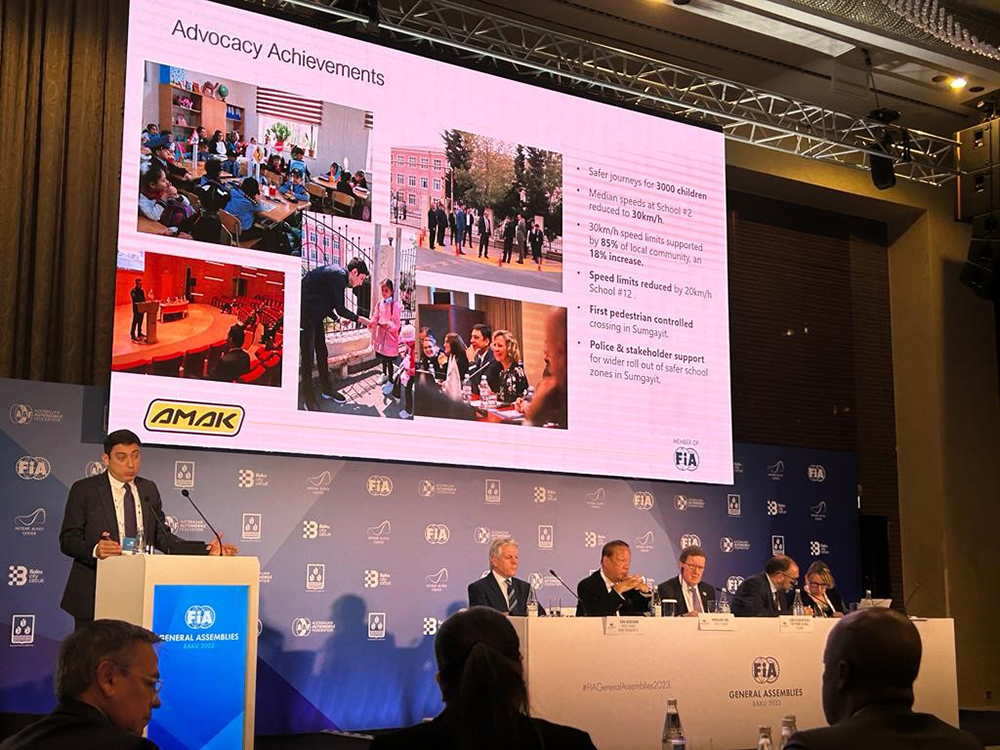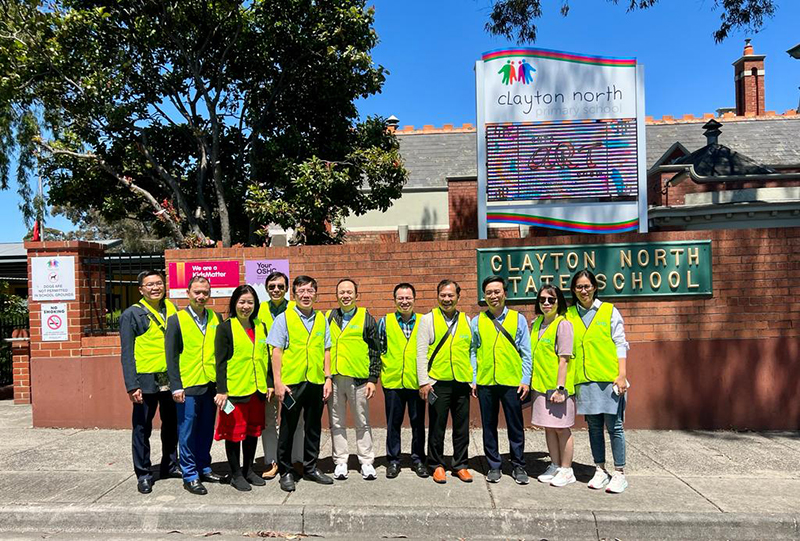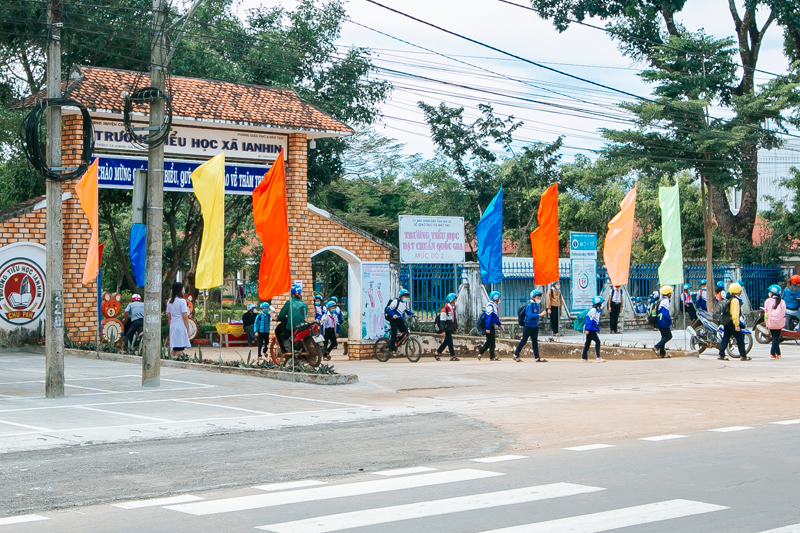Life-saving safe school infrastructure launched in Jamaica
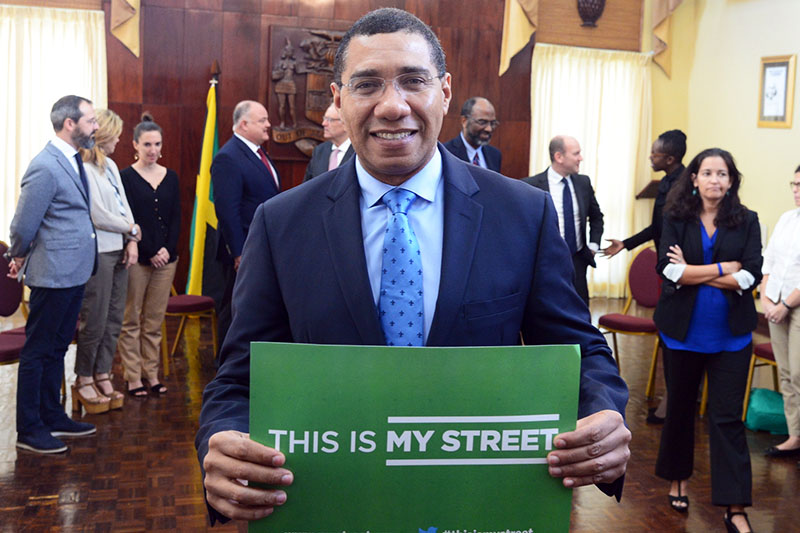

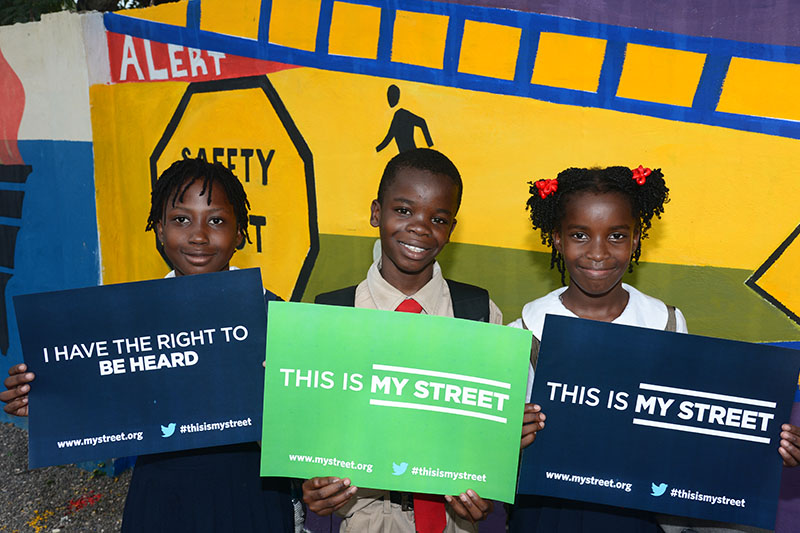
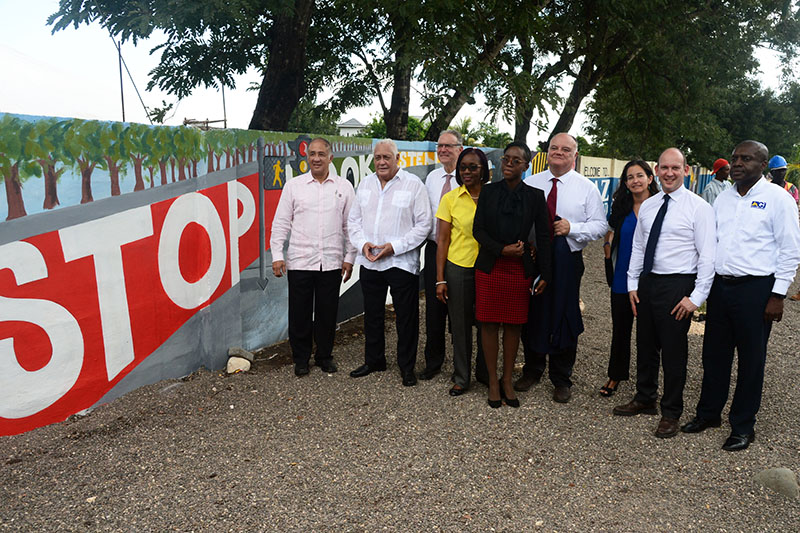
Jamaica is now scaling-up its safe school journeys programme following support from the Child Health Initiative, the Government and new donor funding.
Child Health Initiative (CHI) partners began working with UNICEF Jamaica, the JN Foundation and a range of government Ministries at the end of 2017. On November 7th 2018, the Prime Minister of Jamaica and the programme partners launched the first safe infrastructure to keep children safe on the journey to school. The new infrastructure is a key outcome of the partnership between the FIA Foundation and UNICEF which involves Jamaica as one of nine participating countries.
The initiative is vital work for the children of Jamaica – road traffic injury is the leading killer of children aged 5-14 in the country according to the Global Burden of Disease data.
Prime Minister of Jamaica Andrew Holness hosted a briefing for all the partners at his office ahead of the infrastructure unveiling. “The truth is that we could reduce our fatal accidents to almost zero if we were to upfront take into consideration good design practices,” the Prime Minister said. “We are trying to ensure that our roads are safe for pedestrian traffic, but more so for our children. I’m very happy to see the investment being made around our schools, to make the approaches to the school safer for our children.”
Rebecca Tortello, UNICEF Jamaica Education Specialist said: “We’re trying to make people more aware of the often treacherous journeys that our children are taking on the journey to school. With our partners we are ensuring that the essential life-saving measures are put in place around schools. We will be working to further expand this initiative working school by school to ensure that our children are kept safe.” Along with JN Foundation, UNICEF Jamaica’s national ‘X marks the spot’ campaign is aiming to promote safe crosswalks and infrastructure country-wide.
Avi Silverman FIA Foundation Deputy Director said: “Through the Child Health Initiative and its partners, we have been calling for safe and healthy school journeys for children everywhere. The work here in Jamaica is an important step forward towards this. To see the first safe road infrastructure being implemented in low-income communities and then scaled-up across the country shows what kind of impact is possible. The level of engagement among both children and the wider community is also impressive. We hope the government and its partners can continue to build upon this work serving as a leading example worldwide.”
Working with the Amend NGO and iRAP’s ‘Star Ratings for Schools’ package, the CHI has helped introduce the methodology for school area assessments and infrastructure improvements around schools in Jamaica.
High risk schools were selected by UNICEF Jamaica and the JN Foundation working with the Ministry of Education, the National Road Safety Council and the National Works Agency. National partners received training from international experts at iRAP and Amend. Following an initial workshop, Star Ratings for Schools (SR4S) was carried out around the first schools to assess the risk on the roads for children. The SR4S assessment found that the first school, Hazard Primary, had a ‘one star’ level of safety which means children were exposed to unacceptable levels of risk.
The initiative in Jamaica is part of the FIA Foundation’s wider support for UNICEF as a whole, which has seen programme work starting across 9 countries along with global coordination and advocacy. An important component of the FIA Foundation-UNICEF partnership has been to mobilise further resources for road traffic injury prevention. Thanks to this effort, an additional $3 million donor support from the Abertis Foundation was raised. Part of this funding has enabled scaling-up of the work in Jamaica and through 2019, a total of 18 schools will receive infrastructure improvements and will be involved in road safety campaigning.
During 2018, after national partners and road engineers had carried out road safety design work, implementation was carried out around Hazard Primary. Safe infrastructure was implemented around the school, including a safe crossing, speed humps and a safe sidewalk. Many of the children travel to school by bus or taxi and a dedicated drop-off area has been created, with the sidewalk giving safe access to the school.
The community has been involved and engaged in the upgrade, with local students painting the outer wall of the school and the sidewalk itself. The infrastructure upgrade has not only increased levels of safety but has also improved the environment for the local community.





